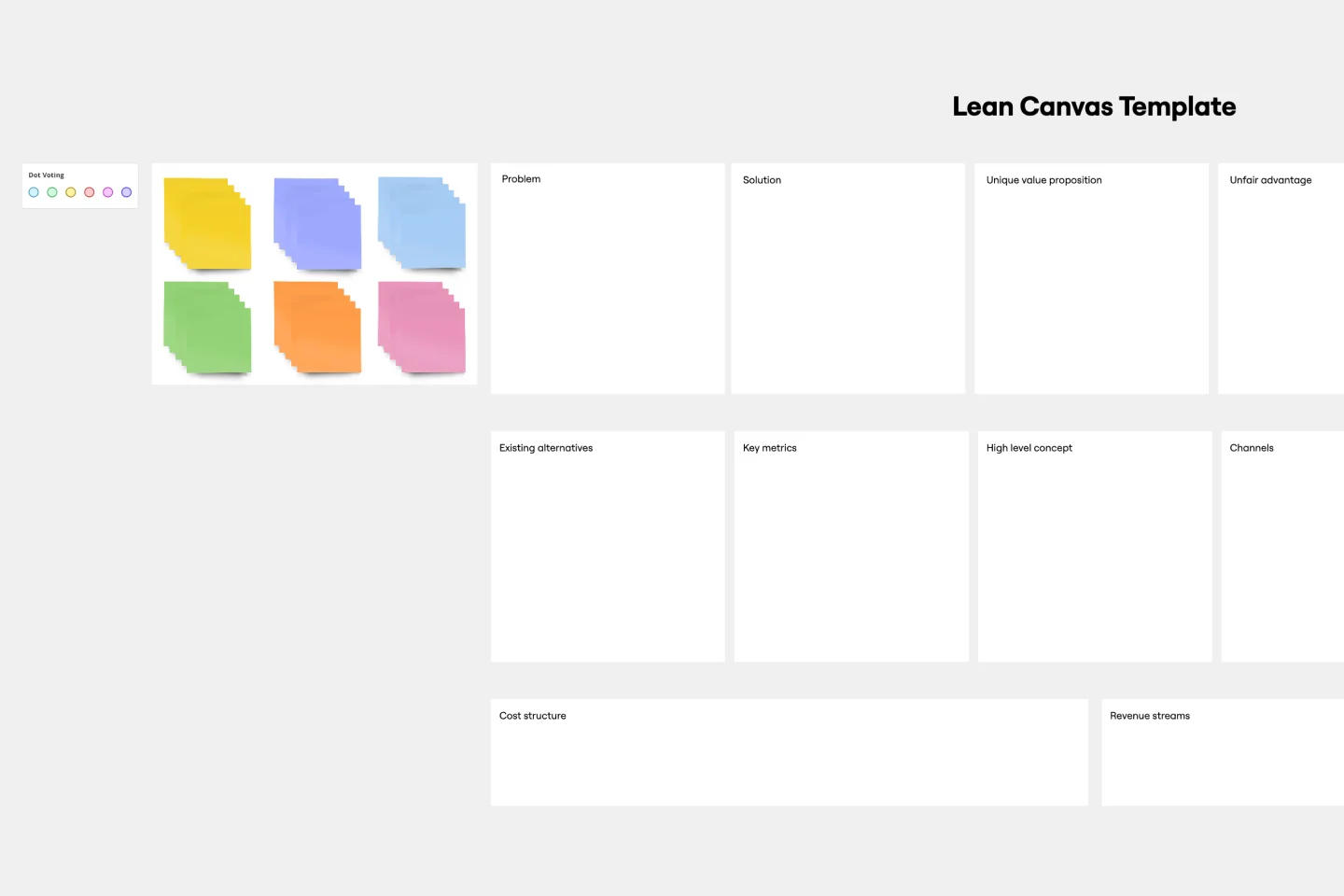Lean Canvas templates
Miro's Lean Canvas templates help you develop and refine business ideas effortlessly. Whether you're planning, strategizing, or problem-solving, these templates provide a clear structure to map key elements, identify opportunities, and drive innovation.
Lean Canvas Template
Works best for:
Agile Methodology, Strategic Planning, Agile Workflows
Business opportunities can get dense, cumbersome, and complex, and evaluating them can be a real challenge. Let a lean canvas streamline things and break down your business idea for you and your team. A great tool or entrepreneurs and emerging businesses, this one-page business model gives you an easy, high-level view of your idea — so you can stay focused on overall strategy, identify potential threats and opportunities, and brainstorm the various factors at play in determining your potential profitability in an industry.
Product Canvas Template
Works best for:
Desk Research, UX Design
Product canvases are a concise yet content-rich tool that conveys what your product is and how it is strategically positioned. Combining Agile and UX, a project canvas complements user stories with personas, storyboards, scenarios, design sketches, and other UX artefacts. Product canvases are useful because they help product managers define a prototype. Creating a product canvas is an important first step in deciding who potential users may be, the problem to be solved, basic product functionality, advanced functionalities worth exploring, competitive advantage, and customers’ potential gain from the product.
Join thousands of teams collaborating and doing their best work on Miro.
Sign up freeAbout the Lean Canvas Templates Collection
Lean canvas templates are powerful tools for entrepreneurs and teams looking to streamline their business planning process. These templates provide a structured, visual format to outline key aspects of a business model, making it easier to identify potential challenges and opportunities. Our lean canvas templates are designed to be user-friendly and highly customizable, allowing teams to collaborate in real time and iterate quickly.
Why you'll love our lean canvas templates
Using Miro's lean canvas templates offers many benefits, especially for beginners:
Simplified business planning: The lean canvas model template breaks down complex business plans into manageable sections, making it easier to focus on each critical component.
Visual clarity: Miro's visual capabilities enhance the lean canvas templates, providing a clear and engaging way to present and analyze business ideas.
Collaboration: Teams can work together in real-time, adding their insights and feedback directly onto the canvas, fostering a collaborative environment.
Flexibility: The templates are highly customizable, allowing users to adapt them to their specific needs and industry requirements.
Efficiency: By using a structured template, teams can save time and ensure that all essential elements of their business model are covered.
How to use the lean canvas templates in Miro
Access the template: Start by selecting the lean canvas template from Miro's template library.
Fill in the sections: Begin by filling out each section of the canvas. These sections typically include problem, solution, key metrics, unique value proposition, channels, customer segments, cost structure, revenue streams, and unfair advantage.
Collaborate with your team: Invite team members to join the board. They can add their input, comments, and suggestions in real time, ensuring a comprehensive and collaborative planning process.
Visualize and iterate: Use Miro's visual tools to enhance your canvas. Add images, icons, and links to make your canvas more engaging and informative. Iterate your ideas based on team feedback.
Finish and share: Once your lean canvas is complete, you can share it with stakeholders or export it for presentations. Miro's sharing options make it easy to distribute your work.
Using Miro's lean canvas templates helps teams thrive by providing a clear, collaborative, and efficient way to plan and visualize their business models. Try the lean canvas templates in Miro today and see how they can transform your business planning process.
